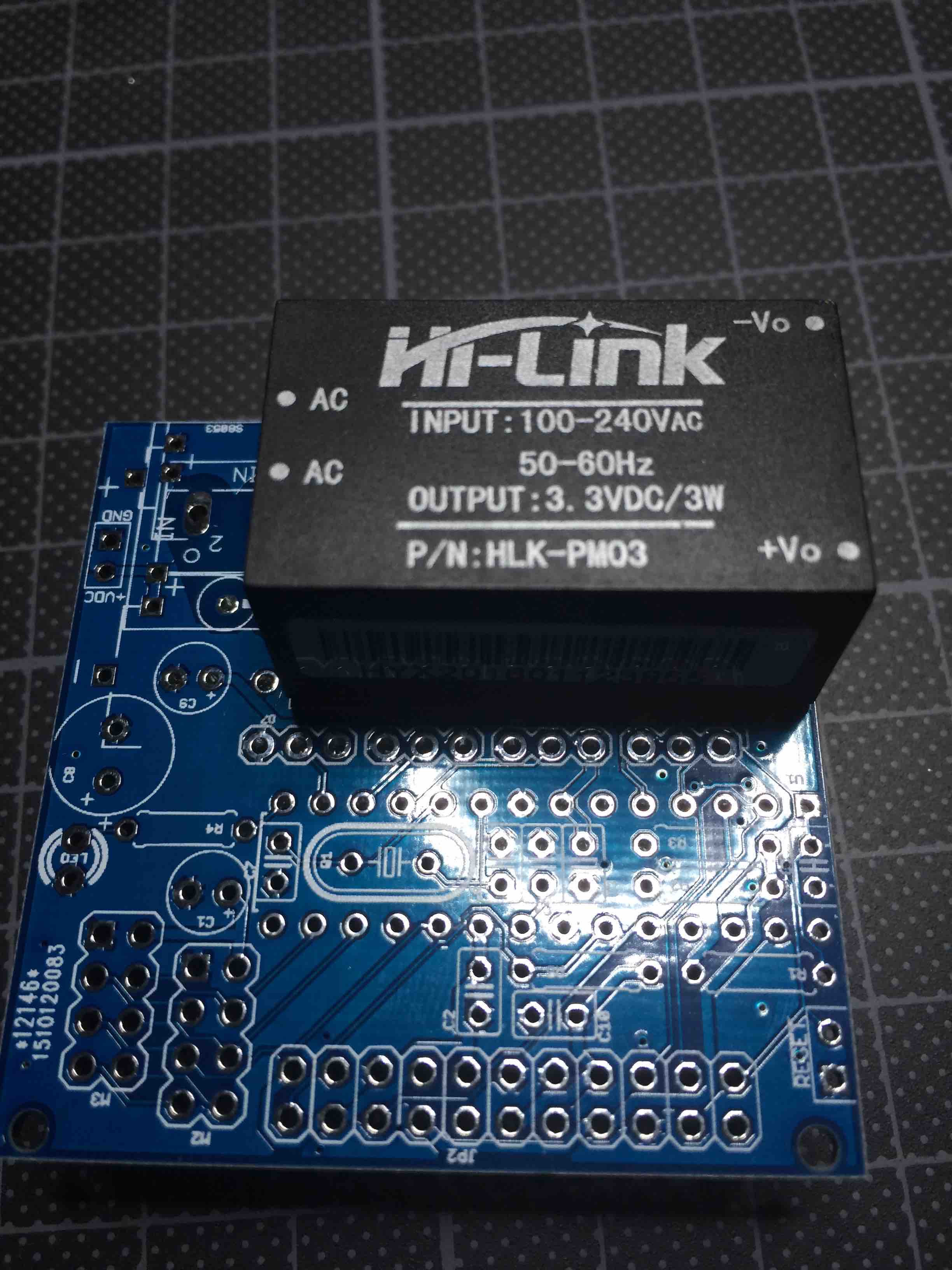110v-230v AC to Mysensors PCB board
-
Found something interesting on Aliexpress which is a drop in replacement for the HLK-PM01:
the HLK-PM03
Same size and pin locations, but 110-200 V AC to 3V3 DC.

It fits my multi-power options board perfectly.
-
Nice find GertSanders ... I am planning to use esp8266 which runs on 3.3 volt... best fit ..
If we use this we may have to drop few things from 5.5 board right?
Like no need of 5v - 3.3 converter
change relay to match 3.3v like this http://vod.ebay.com/vod/FetchOrderDetails?qu=1&itemid=401045943120&transid=522355020027&viewpaymentstatus=Anyexpert around? do we need to remove anythingelse (any capacitor?)
-
But 3.3v relay will not match the board. If we use 5.5v relay do we need to add something to circuit?
-
Hi,
Thank you for this pcb. In which program did you do the design? Do you think you can share an editable version of the design?
I would like to modify it to accept the Mean Well IRM-05-5 instead of the Hi-Link.
It is more expensive and bigger AC-DC circuit but since I hace some in my stash i would like to use them. -
Nice find GertSanders ... I am planning to use esp8266 which runs on 3.3 volt... best fit ..
If we use this we may have to drop few things from 5.5 board right?
Like no need of 5v - 3.3 converter
change relay to match 3.3v like this http://vod.ebay.com/vod/FetchOrderDetails?qu=1&itemid=401045943120&transid=522355020027&viewpaymentstatus=Anyexpert around? do we need to remove anythingelse (any capacitor?)
@toabhishekverma said:
change relay to match 3.3v like this http://vod.ebay.com/vod/FetchOrderDetails?qu=1&itemid=401045943120&transid=522355020027&viewpaymentstatus=
That's a link to your shopping cart, we don't have access to...
I'm interested in the relay, can you post a working link? -
-
I use the same SONGLE relays:
http://www.aliexpress.com/item/5pcs-SRD-03VDC-SL-C-3V-relay-5-feet-10A/32453591000.html
-
@GertSanders thanks for this link.
So do you have working prototype? what board are you using? I am in middle of finalising components and trying to finalise design. With little knowledge of electronics my progress is slow.
Also for 220 to 3.3v there is another converter from Olimex https://www.olimex.com/Products/Power/PWR-90-240V-3.3V0.8A/
overall its abit smaller then Hi-Link... Hi-Link abit better because all covered and less dangerous.Please share if you have any design finalised.
-
I use the same SONGLE relays:
http://www.aliexpress.com/item/5pcs-SRD-03VDC-SL-C-3V-relay-5-feet-10A/32453591000.html
@GertSanders @toabhishekverma Do you have the dimensions and/or holding resistance?
-
Sorry I didnt get your questions .. do you mean dimensions of 220-3.3v converter. Here they are.
output 2.5W 3.3V/0.8A +-0.2V size: 30x20x18mmI am not from electronics background so didn't get what holding resistance means?
-
Sorry I didnt get your questions .. do you mean dimensions of 220-3.3v converter. Here they are.
output 2.5W 3.3V/0.8A +-0.2V size: 30x20x18mmI am not from electronics background so didn't get what holding resistance means?
-
@Yveaux Still no idea about it. Check link if you get something from it. what I know is it can bear up to 10A current and can be controlled using 3v .... my order still in shipping so don't know more then that.
-
@Yveaux Still no idea about it. Check link if you get something from it. what I know is it can bear up to 10A current and can be controlled using 3v .... my order still in shipping so don't know more then that.
@toabhishekverma Ah, ok. Didn't know they were still in transit.
Maybe @GertSanders has them 'on stock'? -
@toabhishekverma Ah, ok. Didn't know they were still in transit.
Maybe @GertSanders has them 'on stock'? -
Another source :
50Pieces/Lot JRC-21F 4100 3V DC 6 Pins Miniature PCB Relay Brand New
http://s.aliexpress.com/MNVv2myE -
@toabhishekverma Ah, ok. Didn't know they were still in transit.
Maybe @GertSanders has them 'on stock'?@Yveaux No, also still waiting for the order to arrive. But a coil resistance of 20-25 Ohm means driving the coil with a FET. Not directly from a atmega328 pin.
-
Another source :
50Pieces/Lot JRC-21F 4100 3V DC 6 Pins Miniature PCB Relay Brand New
http://s.aliexpress.com/MNVv2myE@Porky6666 : only switches 3A, SONGLE relay can switch 10A.
-
@Yveaux No, also still waiting for the order to arrive. But a coil resistance of 20-25 Ohm means driving the coil with a FET. Not directly from a atmega328 pin.
@GertSanders said:
@Yveaux No, also still waiting for the order to arrive. But a coil resistance of 20-25 Ohm means driving the coil with a FET. Not directly from a atmega328 pin.
Correct. Here's how I wired the songle relay on my Lithium Ion Sensor PCB:

@GertSanders said:
@Porky6666 : only switches 3A, SONGLE relay can switch 10A.
I wouldn't trust both of them when it comes to switching high amp devices over 3A. I think there is a reason no german electronics shop sells songle relays :smile:
Plus, relays from an electronics shop in your country might cost the same than the songle relays or will just be a tiny bit more expensive.
At least this is true for 5V relays. 3V relays are hard to find (at least in germany)
